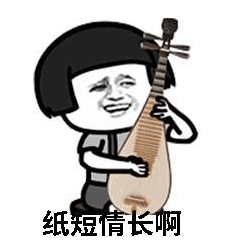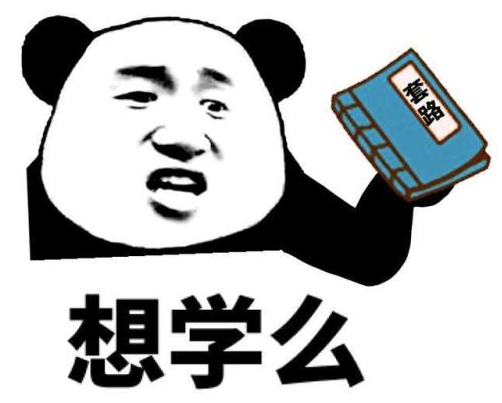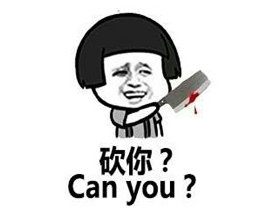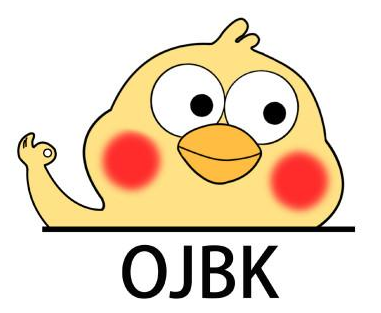catalogue
Zero basic Python learning route recommendation: Python learning directory >> Getting started with Python Basics
stay Python variables In addition to the integer int / floating point number float / Boolean bool mentioned in the previous article/ List list / Dictionary dict In addition, there is another type that we haven't introduced in detail. This variable type is set.

I Introduction to set set
Python set collection Braces {} are used to indicate that, unlike dict, the set set does not have a key / value pair. It mainly has the following two characteristics:
- 1. Elements cannot be repeated;
- 2.set does not record the addition order of elements, that is, it is disordered, which is similar to a dictionary;
# !usr/bin/env python
# -*- coding:utf-8 _*-
"""
@Author:Ape programming
@Blog(Personal blog address): www.codersrc.com
@File:Python set aggregate.py
@Time:2021/04/04 11:00
@Motto:No small steps lead to thousands of miles. No small streams lead to rivers and seas. The brilliance of program life needs to be accumulated unremittingly!
"""
# Create an empty set
set_a = set()
# Print set
print(set_a)
# View type
print(type(set_a))
print("***"*20)
# Create a collection
set_b = {"Ape theory python",False}
print(type(set_b))
print(set_b)
print("***"*20)
# Create a dictionary
dict_b = {"name":"Ape theory python","url":"www.codersrc.com"}
print(type(dict_b))
print(dict_b)
'''
Output result:
set()
<class 'set'>
************************************************************
<class 'set'>
{False, 'Ape theory python'}
************************************************************
<class 'dict'>
{'name': 'Ape theory python', 'url': 'www.codersrc.com'}
'''
Code analysis: observe the above code. Although the dictionary dict and set are both composed of {}, note that the dictionary is composed of key / value pairs, and the set is composed of one data, and List list Similar elements!

II Set set common functions
- add - adds an element to the set set;
- Remove - delete the element. If the collection does not contain the deleted element, the remove() method will report a KeyError exception;
- discard - delete the element. If the collection does not contain the deleted element, there will be no prompt or exception;
- Clear - clear the blank set;
- Copy - copy a set;
- Difference - returns the difference set of multiple sets;
- difference_update - remove the element in the set, which also exists in the specified set;
- Intersection - returns the intersection of two sets without changing the set itself;
- intersection_update - returns the intersection of sets, which will change the first set through intersection operation;
- isdisjoint - judge whether two sets contain the same element. If not, return True; otherwise, return False;
- issubset - judge whether the specified set is a subset of the method parameter set;
- issuperset -- judge whether the parameter set of the method is a subset of the specified set;
- pop - randomly remove elements;
- symmetric_difference - remove the same elements in another specified set in the current set, and insert different elements in another specified set into the current set;
- Union -- returns the union of two sets;
- update - used to modify the current set. You can add a new element or set to the current set. If the added element already exists in the set, the element will only appear once, and repeated elements will be ignored;
# !usr/bin/env python
# -*- coding:utf-8 _*-
"""
@Author:Ape programming
@Blog(Personal blog address): www.codersrc.com
@File:Python set aggregate.py
@Time:2021/04/04 11:00
@Motto:No small steps lead to thousands of miles. No small streams lead to rivers and seas. The brilliance of program life needs to be accumulated unremittingly!
"""
# Use curly braces to build a set set
c = {'Qiao Feng',"duan yu","Phyllostachys pubescens","Tianlong Babu","Legend of Shooting Heroes"}
# Add element
c.add("Tianshan grandma")
c.add(6)
print("c The number of elements in the collection is:" , len(c))
print(c)
# Delete the specified element
c.remove("Tianshan grandma")
print(c)
print("c The number of elements in the collection is:" , len(c))
print("***"*20)
# Determines whether the specified string is included
print("c Whether the collection contains'Qiao Feng'character string:" , ("Qiao Feng" in c)) # Output True
print("***"*20)
# Use the set() function (constructor) to create a set set
movies = set()
movies.add("Tianlong Babu")
movies.add("Legend of Shooting Heroes")
print("movies Elements of the collection:" , movies)
# The issubset() method determines whether it is a subset
print("movies Whether the collection is c Subset of?", movies.issubset(c)) # Output False
# The issuperset() method determines whether it is a parent set
# issubset and issuperset are actually the reverse judgment
print("c Is the collection fully contained books Assemble?", c.issuperset(movies)) # Output False
# Subtracting the elements in the books set from the c set does not change the c set itself
result1 = c - movies
print(result1)
# The difference() method also subtracts the set, which is exactly the same as the effect of performing the operation with -
result2 = c.difference(movies)
print(result2)
# Subtract the elements in the books set from the c set and change the c set itself
c.difference_update(movies)
print("c Elements of the collection:" , c)
# Delete all elements in the c set
c.clear()
print("c Elements of the collection:" , c)
print("***"*20)
# Directly create a collection containing elements
d = {"python object-oriented", 'python Basics', 'python Reptile'}
print("d Elements of the collection:" , d)
# The intersection() method also obtains the intersection of two sets, which is exactly the same as the effect of performing the operation with &
inter2 = d.intersection(movies)
print(inter2)
# Calculate the intersection of two sets and change the d set itself
d.intersection_update(movies)
print("d Elements of the collection:" , d)
print("***"*20)
# Wrap the range object into a set set
e = set(range(5))
f = set(range(3, 7))
print("e Elements of the collection:" , e)
print("f Elements of the collection:" , f)
# Calculate the union of two sets without changing the e set itself
un = e.union(f)
print('e and f Result of Union:', un)
# Calculate the union of two sets and change the e set itself
e.update(f)
print('e Elements of the collection:', e)
'''
Output result:
c The number of elements in the collection is: 7
{'Tianlong Babu', 6, 'Phyllostachys pubescens', 'Qiao Feng', 'duan yu', 'Tianshan grandma', 'Legend of Shooting Heroes'}
{'Tianlong Babu', 6, 'Phyllostachys pubescens', 'Qiao Feng', 'duan yu', 'Legend of Shooting Heroes'}
c The number of elements in the collection is: 6
************************************************************
c Whether the collection contains'Qiao Feng'character string: True
************************************************************
movies Elements of the collection: {'Tianlong Babu', 'Legend of Shooting Heroes'}
movies Whether the collection is c Subset of? True
c Is the collection fully contained books Assemble? True
{'Qiao Feng', 'duan yu', 6, 'Phyllostachys pubescens'}
{'Qiao Feng', 'duan yu', 6, 'Phyllostachys pubescens'}
c Elements of the collection: {6, 'Phyllostachys pubescens', 'Qiao Feng', 'duan yu'}
c Elements of the collection: set()
************************************************************
d Elements of the collection: {'python Reptile', 'python Basics', 'python object-oriented'}
set()
d Elements of the collection: set()
************************************************************
e Elements of the collection: {0, 1, 2, 3, 4}
f Elements of the collection: {3, 4, 5, 6}
e and f Result of Union: {0, 1, 2, 3, 4, 5, 6}
e Elements of the collection: {0, 1, 2, 3, 4, 5, 6}
'''

III Set set operator
- < =: it is equivalent to calling the issubset() method to judge whether the previous set set is a subset of the subsequent set.
- >=: it is equivalent to calling the issuperset() method to judge whether the previous set set is the parent set of the subsequent set.
- –: it is equivalent to calling the difference() method and subtracting the elements of the subsequent set set from the previous set set.
- &: it is equivalent to calling the intersection() method to obtain the intersection of two set s.
- ^: the result of calculating the XOR of two sets is to subtract the elements of the intersection from the union of the two sets.
# !usr/bin/env python
# -*- coding:utf-8 _*-
"""
@Author:Ape programming
@Blog(Personal blog address): www.codersrc.com
@File:Python set aggregate.py
@Time:2021/04/04 11:00
@Motto:No small steps lead to thousands of miles. No small streams lead to rivers and seas. The brilliance of program life needs to be accumulated unremittingly!
"""
# Use curly braces to build a set set
c = {'Qiao Feng',"duan yu","Phyllostachys pubescens","Tianlong Babu","Legend of Shooting Heroes"}
# Use the set() function (constructor) to create a set set
movies = set()
movies.add("Tianlong Babu")
movies.add("Legend of Shooting Heroes")
print("movies Elements of the collection:" , movies)
# The issubset() method has the same effect as the < = operator
print("movies Whether the collection is c Subset of?", (movies <= c)) # Output False
print("***"*20)
e = set(range(5))
f = set(range(3, 7))
print("e Elements of the collection:" , e)
print("f Elements of the collection:" , f)
# Performs an XOR operation on two sets
xor = e ^ f
print('e and f implement xor Results:', xor)
# Directly create a collection containing elements
d = {"python object-oriented", 'python Basics', 'python Reptile'}
print("d Elements of the collection:" , d)
# Calculate the intersection of two sets without changing the d set itself
inter1 = d & movies
print(inter1)
'''
Output result:
movies Elements of the collection: {'Tianlong Babu', 'Legend of Shooting Heroes'}
movies Whether the collection is c Subset of? True
************************************************************
e Elements of the collection: {0, 1, 2, 3, 4}
f Elements of the collection: {3, 4, 5, 6}
e and f implement xor Results: {0, 1, 2, 5, 6}
d Elements of the collection: {'python Basics', 'python object-oriented', 'python Reptile'}
set()
'''

IV Guess you like it
- Conversion between Python Strings / lists / tuples / Dictionaries
- Python local and global variables
- Difference between Python type function and isinstance function
- Python is and = = difference
- Python variable and immutable data types
- Python shallow and deep copies
- Python recursive function
- Python sys module
- Python list
- Python tuple
- Python dictionary dict
- Python conditional derivation
- Python list derivation
- Python dictionary derivation
- Python function declarations and calls
- Python indefinite length parameter * argc/**kargcs
No reprint without permission: Ape programming » Python set collection